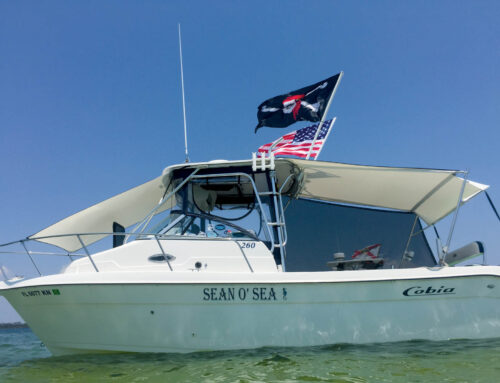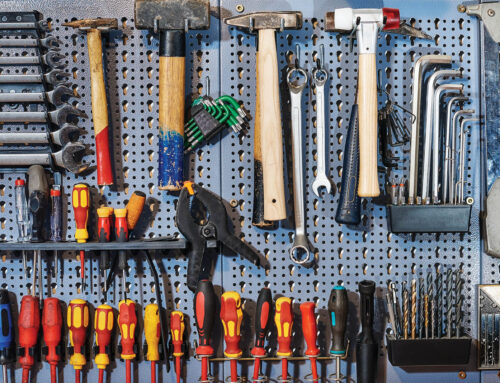Prevent cushion foam failures
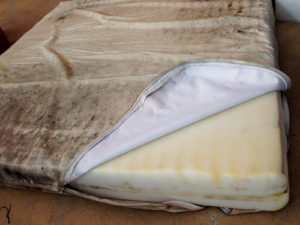
Exterior mattress that sat next to a Jacuzzi. An exterior mesh cover over Dri-Fast® foam could have prevented the deterioration of the vinyl cover over polyfoam. Stagnant water grew mold and the seams allowed the water and mold to seep into the polyfoam.
All marine fabricators who provide products for cushions, bedding and headliners face decisions on the best foam for the application. The right decision ensures quality projects and happy customers. The wrong decision contributes to foam failures.
Cheaper can cost more
Less expensive foams may seem like a good deal until you realize they can deteriorate far more quickly than pricier foams because they may include fillers and additives such as sawdust and soybean oil.
I saw this firsthand some years ago during the oil crisis when prices for petroleum-based products (like foam) shot through the roof. One supplier offered a less expensive marine foam that was not yet “captain” recommended—a definite red flag. Two years later we were contacted by a new customer to replace the deteriorated foam from that supplier.
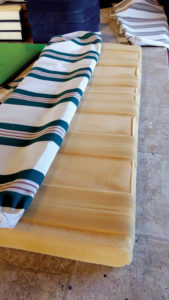
Here is one situation where a liner may have diminished the effects of sunlight. This image shows a commercial acrylic material on an exterior cushion where the polyfoam shrunk in the areas where the fabric was the lightest color. Interestingly, the foam was not affected where the dark stripes absorbed the sunlight. Photo Credit: Devin Genner
To prevent this sort of foam failure, only deal with reputable foam suppliers, ask a lot of questions and educate your customers who may not immediately understand why a more expensive foam product may be more cost effective in the long run.
Case study of cheap foam breakdown
A five-star resort hotel asked us to replace exterior cushions and daybed seating that were only two or three years old. One of the cushions looked like a former balloon that had been popped, another looked as if a wild dog had chosen it for a nesting spot and a third looked as if it had gastric bypass surgery!
Fortunately, we had not provided the original cushions and it was obvious the failure was due to a “budget” foam. A quality marine foam would have lasted twice as long. These cushions did not have liners—only exterior covers in an outdoor fabric.
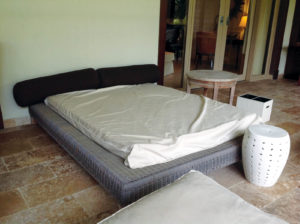
This exterior daybed foam was one of several similar pieces at a resort property. It was a shocking example of foam shrinkage when inferior marine foam was supplied by a low-budget vendor.
Fabric liner considerations
Would a liner have prevented this issue? I don’t believe so. This was clearly a case of the cellular structure of the foam deteriorating in a commercial setting where the seating was used more frequently than on a private vessel. Fabric liners can prolong the life of exterior cushions in some marine settings, but there are important things to consider when using them:
- Fabric type: Some liner fabrics are magnets for mold and mildew when used in an exterior application, and this will also affect the underlying foam. If a liner material is used, make sure it is mold and mildew resistant.
- Application: If frequent cleaning will be required, foam placed inside a liner makes it easy to remove and reinsert into an outer cover.
- Foam type: I generally always use Dri-Fast® marine foam here in the tropics where exterior cushions are frequently subjected to moisture. However, manufacturers offering water-resistant fabrics often question the necessity of using marine foam with their products. If your customer is on a tight budget and will be storing the cushions indoors when they are not being used, you might be able to use a less expensive foam.
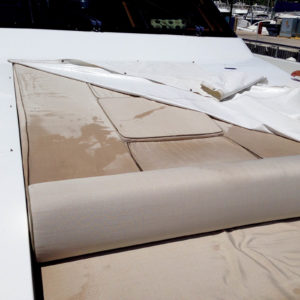
Asked to replace these old bow cushions, I was surprised to see how wet the cushions were underneath a protective cover that did not appear to be torn or broken. To prevent this, a water-repellent finish could have been applied to clean cushions at the first sign of water seepage. A breathable, water-resistant cover would allow for water runoff.
Good cushion foam choices
Open-cell reticulated foam has extremely open pores that allow water and air to flow through it easily and is available in soft, medium and firm densities. These foams are comfortable and stay cool when used for seating cushions and mattresses. Dri-Fast (sometimes called marine foam) is a high-quality open-cell reticulated foam formulated with an antimicrobial agent to prevent mold and mildew. When paired with an outdoor cushion fabric for the top and sides with a mesh base, it creates a virtually maintenance-free all-weather cushion that is easy to clean without removing the foam, making it an ideal choice for most boat cockpit cushions.
Closed-cell PVN foam (also known as flotation foam) is three times firmer than polyurethane foam and is a more expensive option. Its buoyancy makes it a great choice for flotation applications like floating cockpit cushions and life vests. It is also a good choice for commercial boat seating or other seating that will be used as a step for getting on and off the vessel. PVN foam resists water absorption, so you can safely cover it with any type of fabric. Thin sheets of closed-cell foam are often glued to the bottom of other foam, adding additional support to a cushion, like a box spring to a mattress. When using it with Dri-Fast foam, cut holes in the closed-cell foam for drainage.
Terri Madden owns Sand Sea & Air Interiors Inc. in San Juan, Puerto Rico.
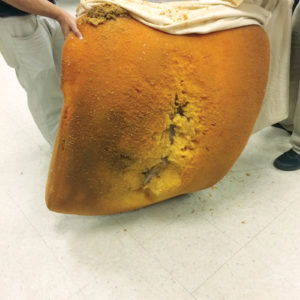
These two-year-old exterior cushions were provided by a well-known manufacturer. Perhaps budget constraints determined the use of polyfoam and the fabricator thought a water-repellent liner would keep water out. Verify the specifications of the materials you use to avoid this situation. We omitted the liner and used Sunbrella® fabric with Dri-Fast foam.
 TEXTILES.ORG
TEXTILES.ORG 



